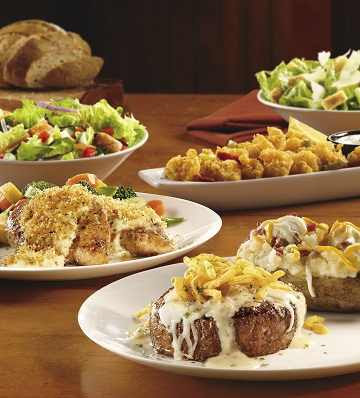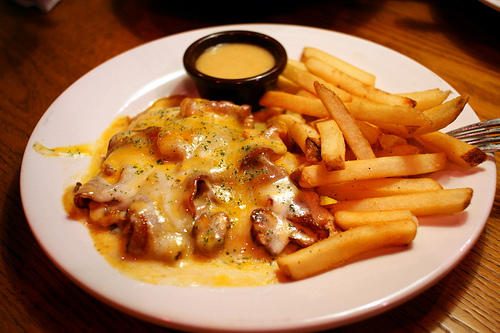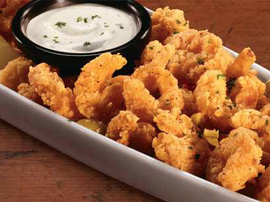Want Healthy Food? Don’t Eat Out. It’s as old as fast food joints. Eating out will eventually catch up to you and your waist line.
Eating Out Will Add Weight To Your Waist Line
If you plan to chow down tonight at a big chain restaurant, there’s a better than 9 in 10 chance that your entree will fail to meet federal nutrition recommendation for both adults and kids, according to a new study.
Study: 96% of chain restaurant entrees exceed USDA limits
A whopping 96% of main entrees sold at top U.S. chain eateries exceed daily limits for calories, sodium, fat and saturated fat recommended by the U.S. Department of Agriculture, reports the 18-month study conducted by the Rand Corp. and funded by the Robert Wood Johnson Foundation.
“If you’re eating out tonight, your chances of finding an entree that’s truly healthy are painfully low,” says Helen Wu, assistant policy analyst at Rand who oversaw the study. It examined the nutritional content of 30,923 menu items from 245 restaurant brands across the USA. “The restaurant industry needs to make big changes to be part of the solution,” she says.

This spread from a popular Texas-themed chain restaurant totaled 3,500 calories!
The restaurant industry is “employing a wide range” of healthier-living strategies, says Joan McGlockton, vice president of food policy at the National Restaurant Association. Among them: putting nutritional information on menus, adding more healthful items and launching a 2011 program at nearly 100 brands in more than 25,000 locations that offers children’s meals in line with 2010 dietary guidelines.
Even then, the restaurant industry-supported “Healthy Dining” seal of approval is too generous on sodium, Wu says. It allows up to 2,000 milligrams of sodium for one main entree, while the USDA’s daily recommended limit for most adults is 2,300 milligrams, she says.
More Information Isn’t Helping
However, some believe that just by supplying consumers with nutritional information and adding more “kid healthy” menu items simply is not enough to overcome this epidemic.
“One factor that many fail to realize when eating out is that the oils and fats that restaurants use to prepare their meals are detrimental to ones cardiovascular health,” notes Dr. Chauncey Crandall, chief of the heart transplant program at Palm Beach Cardiovascular Clinic. These oils tend to be inexpensive to use, which is why chain restaurants favor them over healthier oils, like olive oil. Dr. Crandall explains that, “the body does not process cheaper oils as well as say olive oil. Cheaper oils are believed to be the main culprits to artery plaque build-up within our artery walls and also a culprit to obesity.”
Other highlights of the study, which is posted on Public Health Nutrition:
- Appetizers can be calorie bombs. Appetizers — while often shared — averaged 813 calories, compared with main entrees, which averaged 674 calories per serving, Wu says.
- Family restaurants fared worse than fast-food. Entrees at family-style restaurants on average have more calories, fat and sodium than fast-food restaurants. Entrees at family-style eateries posted 271 more calories, 435 more milligrams of sodium and 16 more grams of fat than fast-food restaurants, Wu says.
- Kid “specialty” drinks often aren’t healthy. Many drinks offered on kids’ menus have more fat and saturated fat on average than regular drinks. While regular menu drinks had a median of 360 calories, the median number of calories in kid specialty drinks, such as shakes and floats, was 430. The message to parents, Wu says: “It’s the little extras you order that add up.”

This chicken dish from a popular Australian-themed chain restaurant totaled almost 1,000 calories!
How much is too much? These USDA recommended limits were used to measure against main entrees:
No More Than…
- 667 calories
- 35% of calories from fat
- 10% of calories from saturated fat
- 767 mg sodium
source: USDA
Portions of this article written
By Bruce Horovitz, USA Today

